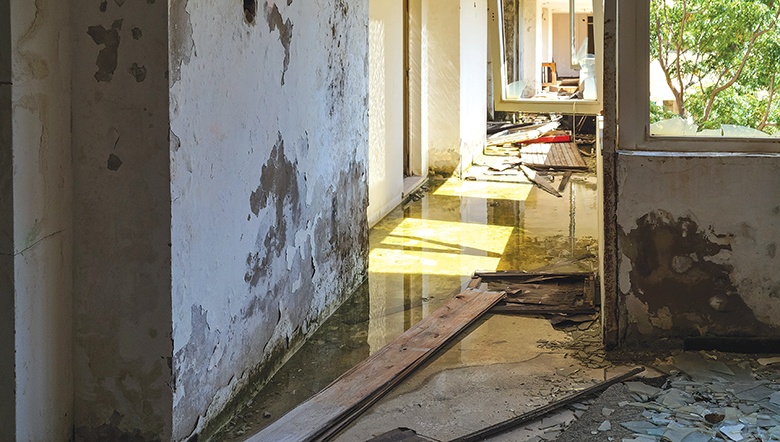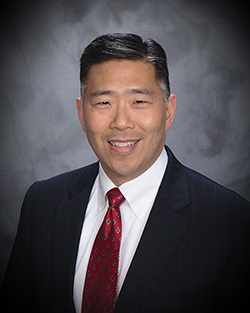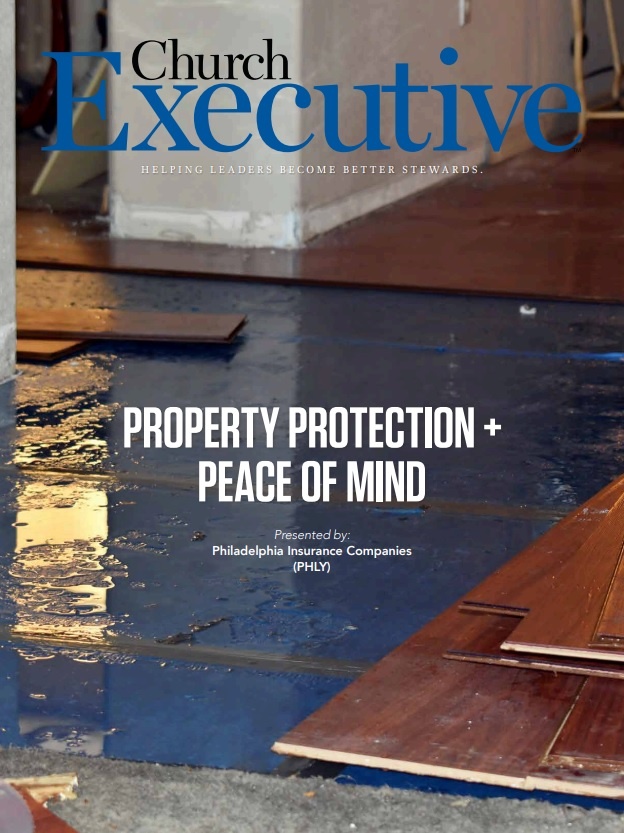
PHLYSense can prevent a problem from becoming a catastrophe
Church Executive: We’ve talked about PHLYSense in the magazine before. For anyone who might just be hearing the term, what is PHLYSense?

Assistant Vice President —
Risk Management Services
Philadelphia Insurance Companies (PHLY)
Peter Kim: Simply put, PHLYSense is a property protection solution that provides building owners and occupants with monitoring and alerts for adverse conditions.
PHLYSense has two main parts. The first involves sensors that monitor ambient temperature and the presence of water. Each sensor is compact and fits into the palm of your hand. Sensors are commonly placed in areas vulnerable to heat, low temperatures, or water — IT server rooms for high-temperature alerts, for example. Or, for water alerts, in vestibules or a under kitchen sink, areas next to hot water heaters or boilers, spaces near sump pumps, or even areas where water leaks or plumbing backups have been a problem before.
The second part of the system is the monitoring and the alert infrastructure. This includes an online dashboard (or you can use a phone app) where you can see the status of all the sensors across one location or multiple locations. In the event of an alert — high or low temperature or the presence of water — notifications are pushed out to the organization’s designated individuals via text, email or both. They can also receive phone calls. In this sense, PHLYSense gives churches the opportunity to take action before an issue becomes a catastrophe.
PHLYSense is a trade name of Philadelphia Insurance Companies, and the technology is proprietary to Hartford Steam Boiler. They are a top-of-class partner company which provides us with hardware devices and back-end monitoring and support. Partnering in this way allows us to focus on what we do best, which is essentially taking the solution and getting it into our policyholders’ hands.
CE: Is there a cost associated with getting PHLYSense?
Peter Kim: No; PHLYSense is available to any PHLY policyholder for whom we provide buildings coverage. It doesn’t matter if it’s a little country church or a multisite megachurch: PHLYSense is a value-added service for all our policyholders with building property coverage from PHLY. We’re literally giving these away.
 CE: Maybe the best way to demonstrate the efficacy of PHLYSense is with real-life examples. I’m told there are a few recent “saves” in which these monitors played a key role. Tell me about those.
CE: Maybe the best way to demonstrate the efficacy of PHLYSense is with real-life examples. I’m told there are a few recent “saves” in which these monitors played a key role. Tell me about those.
Peter Kim: The two most recent saves come from nonprofits. The first nonprofit — which experienced a frozen pipe — owns and operates a set of group homes; the other had a leaking-pipe incident in its main office building.
In the first incident, the group home was vacant at the time. One of the maintenance employees received a cold-temperature text alert on a Sunday. The area was experiencing a winter storm and the back door had blown open. The pipes froze just before the maintenance worker arrived; water was being released, but it was minimal. The employee was able to turn off the water, do some cleanup, and make a small repair.
Interestingly, this same nonprofit signed up for PHLYSense in 2022 but opted to try in just a few of their homes as a trial. Shortly afterward, a similar freeze event occurred in one of their group homes without PHLYSense and caused more than $50,000 in damage. It wasn’t long before the client installed PHLYSense in every group home — more than 20 locations.
The executive director wrote us a letter after that Sunday morning event. It reads, in part:
Had we not had sensors in this home, I’m certain we would’ve been looking at another $50,000 or more in damage. I have peace of mind that we will be avoiding any further costly repairs due to water damage.
In the second example — the non-profit headquarters office — this wasn’t the first time the client experienced water damage due to leaky pipes underneath the kitchen sink. That’s why a PHLYSense sensor was in place under that sink.
A month after the first incident, during a recent three-day weekend, the under-the-sink sensor indicated another water release. The client had someone on site within 20 minutes, and the result was minimal water damage. Had they not caught it early, the water could have run for several days and caused a major disruption for the nonprofit.
In another event at a church, a pipe leak in the ladies’ restroom occurred, alerting the sensor and resulting in a quick cleanup of the area.
At another church, a drain line for the ice machine outside the church gym experienced a leak. The sensor alerted, saving the hardwood floors in the gym from damage — a potentially big expense.
The list goes on.
In every case, a church/organization avoided or minimized water loss and downtime and the disruption associated with it. PHLY won, too, because those claims were minimized.

CE: Conversely, how often do you see claims in which a sensor monitoring system — like PHLYSense — could have averted a disaster?
Peter Kim: We see it all the time; water loss events are consistently one of the top drivers for property claims with PHLY.
As two general examples, we’ve recently had very large freeze events in the United States. In 2021, polar vortex attacks affected large parts of the country, but we saw an extremely large number of events occur in Texas, primarily due to power and heat outages. Then, in 2022, Winter Storm Elliott happened right around Christmas, again affecting large parts of the country, but especially the Southern states.
Those two events showed a marked difference in the outcome between accounts who had PHLYSense and received alerts and were able to take quick action, and those who did not. In a very large sense, this provided definitive proof that PHLYSense works and, again, is to everyone’s benefit.
CE: Why are churches such a good fit for the PHLYSense monitoring system?
Peter Kim: Many churches have large gaps of time each week when their facilities aren’t in use, or when someone is there for only a few hours at a time. PHLYSense gives churches a way to monitor their buildings when no one is there.
Also, due to financial pressures, we know that a church might not have the ideal insulation throughout its whole building. Or it might not have a tight building envelope keeping outside cold air from leaking in simply due to the age of the building. Or maybe there is delayed maintenance. Generally, it’s understood that churches will direct as much of their financial resources as they can to their ministries, and that’s appropriate; their building upkeep might be secondary.
PHLYSense can help make up for these factors that are somewhat inherent in churches and provide them with protection and peace of mind.
CE: Is there anything we haven’t discussed but that is important to mention?
Peter Kim: I want to stress that PHLYSense is strictly a loss reduction service. We understand that data privacy is a big concern these days, and rightfully so. I can assure [readers] that PHLY is not monetizing any account information that flows to us or through us from our PHLYSense program.
Also, this service is not being used to create any type of claim barriers for our policyholders if a water event occurs. In other words, we’re not using PHLYSense information and alerts to look for ways not to uphold our end of the claim process. We will honor and be glad to cover our accounts with their claims needs when they occur.
We truly want to have PHLYSense devices in all buildings that we insure so that everyone can benefit from this property protection service.
— Reporting by RaeAnn Slaybaugh


